Our Moshirolmamalek Hotel in Yadz was a delight. At last we were in a hotel which had some atmosphere, warmth and style. A former wealthy merchant's residence, this lovely Qajar-era house has been tastefully transformed into a gorgeous hotel set in a tranquil waterscaped garden surrounded by roses, rhododendrons and honeysuckle. Flowering pansies and violas hung profusely from hanging pots.
The background haunting musical tones of a flautist made for a fabulous atmosphere. We didn't even need cooling. The beautifully domed stone ceilings and good ventilation provided all the cooling we wanted.
Early in the morning, I wandered around the gardens, enjoying the peace and solitude and taking some photos of the splendid garden setting. I was not on my own for long. Several young women gathered close by, and were soon joined by more. And then more. Staring hard and pointing at me, they looked as if they had seen a ghost. They probably thought they had. I didn't think their attention was any different from our usual impact on the locals. That is until I returned to our hotel room. I had completely forgotten to wear my head scarf. Alan told me that my poor performance with my head scarf so far meant that I would never make a good Muslim woman.
The hotel was understandably full of tourists but it did not detract from the quality of the venue, food and service. While enjoying a slow breakfast we were joined by a European woman who turned out to be the Belgian Commercial Attache. Based in Tehran, she had spent considerable time in the country, her job enhancing trade relations between Iran and Belgium. Her experiences as a diplomat were fascinating and we spent an interesting time talking to her about Iran, and also her travels to Pakistan our next destination. She had just returned from a trip over the Iran-Pakistan border to the far western Pakistan city of Quetta and kindly warned us of the perils of being kidnapped and murdered on this route. We assured her we had no intention of visiting Quetta, although we would have very much liked to do so in better circumstances. Although we had travelled to Pakistan just two years before and had fallen in love with the country, stories such as these triggered within me a raw pang of fear. Alan as usual, just shrugged the story off. As he said, we were not going to Quetta anyway....
We were sorry to leave Yadz but we were very much looking forward to visiting the famous Esfahan, known as the most beautiful city in the world. Our itinerary involved a number of visits to ceramic factories and other sites on the way but this day we insisted we limit our trip to just some of the more significant places.
Our first stop was at the ancient city of Meybod, the second largest city in Yadz Province and some 50 kilometers north of Yadz. Its history pre-dates the Islamic era and it has been a significant centre over the centuries for the Zoroastrian religion.
Like Yadz, Meybod is a desert city comprising mud and clay brick adobe housing. Although it was early in the morning, the city shimmered in the scorching heat.
The ruins of Narin (also known as Narein or Narenj) Castle built high on the top of Galeen Hill were fabulous. Built in the Sassanid era, and substantially added onto in later years, Narin is one of the oldest mud brick castles in Iran. It is thought to be one of the descendants of the ancient Zoroastrian fire temples. The ruins stand at some 40 meters in height and interestingly the walls contain an ancient type of plumbing system. On location a plaque is inscribed with documentation which suggests that the Galeen Hill site may date as far back as the third millennium BC. The site covers a staggering area of some four hectares and comprises five levels.
A lot of the castle has been destroyed and during our visit we were amazed at the amount of reconstruction taking place. We were especially taken with the amount of sheer hard physical labour involved, with buckets of mortar being pulled up by hand from the bottom floor to the top. Mohammad pointed out the changes in the architecture during the different eras as more and more building was added on to the castle complex. And when we looked, it was actually quite obvious. We found it a site well worth visiting and the views of Meybod city from the top of the castle were spectacular.
Nearby to the castle is an old ice house and rather magnificent water reservoir. The system of storing ice in the hot southern deserts of Iran is quite ingenious. During the freezing cold winter months water is thrown against a long cold facing wall. After is freezes, it is then scraped off and stored in the adjacent mud brick dome. The capacity of the Meybod ice house was enormous. Ice is stored here during the winter months for use during the hot summer period. It is a great reminder of the wonderful insulation properties of frozen water and how such a simple method can allow the cooling and storage of fresh food in such an extremely hot and dry desert climate.
Out of the blue on the long desert road to Esfahan, we stopped at a police road block. Armed with menacing machine guns and pistols, these guys were not looking at all friendly. They inspected our passports in detail, glanced through the car window at us, then nodded for us to proceed. At such police stops, I often thought of the three young Americans who were arrested for inadvertently (well, that's what they claimed) crossing the border into Iran while they were hiking. At the time and after some two years, two of them were still in jail in solitary confinement, accused of being American spies.
After some two hour's drive from Yadz we were in the Province of Esfahan. Our first stop was the ancient city of Na'in and its ancient Jameh Mosque. Although the mosque is one of the oldest in Iran, it is still in use and is protected by Iran's Cultural Heritage Organisation. The building was interesting with its intricate stucco detailing and its imposing mihrab (prayer niche on the inside of a mosque wall, indicating the direction to Mecca). The basement was made from excavated soil mixed with a cement like paste, which gave it a somewhat white plastered appearance, and despite the outside heat, its deep bowels were surprisingly cold. Mohammad told us that a tour group in August last year had measured the differences in temperature between the outside and the basement. The outside had measured a whopping 42.6 degrees C, whereas the basement was a cool 21.2 degrees. Na'in suffers from great extremes of temperatures and the ingenious design of the building has for centuries allowed for prayers in both summer and winter months.
The sun blazed down from a cloudless azure sky onto the bare, treeless site.
There was not a soul to be seen and although the mosque was still in use, we did at times wonder if in fact there were any people living in this vast stretch of desert environment.
From Na'in to Esfahan was pure desert. Mohammad had told us that it was once a land of extensive pomegranate farming but that over the years, the water had dried up and the orchards were abandoned. We crossed the bare Zagros Mountains and a nuclear plant and military base loomed ahead. Not surprisingly, it is a no fly zone. About thirty kilometers out of Esfahan we passed through dead flat salt pan country. An increasing amount of large factories, steelworks and brick making yards appeared as we were entering the drab outskirts of the city. Once again, we wondered where this so called Most Beautiful City in the World was going to appear from. Well, it did - eventually....
Esfahan
Ancient Esfahan was part of the early Elamite Empire, known then as Aspandana. It was then a significant town during the Median era, before becoming under the control of successive Archaemenid and Parthian Empires. During the Sassanid era, Esfahan was governed by the "Espoohrans", members of seven noble Iranian families and became a central military centre. Sadly, like so many cities, Esfahan submitted to the wrath and bloody terror of Timur who in 1387 ordered a massacre of all of the city residents. Fortunately for Esfahan the city regained its importance and entered its golden era during the 16th century under Shah Abbas the Great (1587-1629) who performed the mighty task of unifying all of Persia. It must have been a glorious time for Esfahan with the creation of beautiful parks, palaces and libraries, and a sophistication that amazed visiting Europeans. In the 17th and 18th centuries Esfahan became the capital of Safavid Persia.
Today Esfahan has a population of around 3.5 million and is the third largest city in Iran. It is well known for its production of fine carpets, textiles, handicrafts and steel. It is also home to several nuclear experimental reactors as well as housing facilities for producing nuclear fuel.
With its splendid and well preserved architecture, beautiful mosques, palaces and tree-lined boulevards, together with its fabulous series of covered bridges and extraordinary Imam Square, we could well understand Esfahan's reputation of being "The Jewel of Persia". According to the old Persian proverb, "Esfahan nesf-e jahan ast" - Esfahan is half of the world, or to see the city is like seeing half of the world.
Esfahan city is located on the lush plain of the Zayandeh River at the foothills of the Zagros Mountains. The city enjoys a temperate climate but an extremely low rainfall of just 113 mm per year. We were delighted to arrive in this city that we had read so much about. The attractive leafy city boulevards were lined with tall trees which was a very welcome change after so many kilometers of searingly hot, dry desert landscape.
We barely touched down in lovely Esfahan before we were whizzed to the well known Jameh Mosque, the oldest and apparently most beautiful mosque in Iran. The mosque was grand overall but in some parts, we had to admit we found it somewhat underwhelming. Perhaps we were just tiring.
The Jameh Mosque is the oldest mosque in Esfahan and at more than 20,000 square meters, is also the largest mosque in Iran. It is believed that the original mosque dates back to AD 772. In the 8th century a large mosque was built over the smaller one. The greater part of the present building dates back to the 11th century and like so many ancient buildings, much of what exists today was added onto in subsequent periods. In the centre of the main courtyard is a fine marble pool which reflects the images of the four "iwans" (vaulted halls or spaces that are walled on three sides, with one side entirely open. Typically, they open onto a courtyard. They were the trademark of Sassanid architecture, and later became part of Islamic architecture). The mosque is well known for its beautiful iwans, the Timurid era Winter Hall, the grand Nezam al-Molk Dome, the intricate Oljaito Mihrab and its mosaic calligraphy, tile works, and beautifully detailed cupped ceilings.
In the afternoon we visited the wonderful Imam Square, formerly known as the Naqsh-e Jahan Square, and (next to Tiananmen Square in Beijing) is the second largest square in the world.
You really have to visit the site to appreciate its vastness and the surrounding collection of some of the finest, most beautiful and what is described as "undeniably the most majestic collections of buildings in the Islamic world". The internal part of the square is decorated with exquisite gardens, sculptured pine trees and beautifully maintained lawns dissected by spacious walking paths. Along the perimeter of the square horse drawn carriages provide tourist transportation. Yes, it is tourist oriented. But how could it not be? It really is a truly magnificent destination. To our delight however, the square and surrounding mosques when we visited were mostly inhabited by local people casually meandering along the garden pathways and through the neighbouring ancient mosques and palaces. Interestingly, we saw very few tourists.
Naqsh-e Jahan means "pattern of the world" and was the vision of the great Shah Abbas who began building the square between 1598 and 1629 as a centrepiece to some of the finest buildings of the Safavid era. The square is surrounded by the Shah Mosque on the south side, the Ali Qapu Palace on the west and the Shiekh Lotf Allah Mosque on the eastern side. On the northern side is the Esfahan Grand Bazaar. The Naqsh-e Jahan Square is now listed as a UNESCO World Heritage Site.
Our next visit in Imam Square was to the splendid Shah Mosque (or Imam Mosque), known also as one of the most beautiful mosques in the world and said to be one of the masterpieces of Persian architecture. It too is listed as a UNESCO World Heritage site. Lonely Planet Guide so aptly describes it: "The richness of its blue-tiled mosaic designs and its perfectly proportioned Safavid-era architecture form a visually stunning monument to the imagination of Shah Abbas I. The sumptuous decoration of the mosque perfectly complements the architectural elegance". Yes, it was truly magnificent.
The construction of the 27 meter Shah Mosque began in 1611 and took some four years to complete and some 25 years before the last of the artisans completed their works. Its splendour is said to be mainly due to the beauty of its seven-colour mosaic tiles and calligraphic inscriptions. Like the Jameh Mosque, it has a four iwan design and comprises four minarets, 42 meters in height topped with carved wooden balconies with stalactite mouldings in a honeycomb pattern running down each of the sides.
The orientation of the mosque was interesting in that although the main portal faces Imam Square, the mosque itself is built at an angle of 45 degrees to the portal so that it points in the direction of Mecca. The Shah Mosque is famous for its inner courtyard and beautiful pool, an inner sanctuary with its magnificent rose patterned domed ceiling, marble mihrab, madraseh and a huge 52 meter double layered turquoise dome. A winter mosque built in typical hypostyle (ceilings supported by many columns) is intricately decorated with gorgeous blue tiles.
We were in awe of the majesty and complexity of the magnificent building and also the great Shah Abbas I. It seems however that the visionary Shah was not flawless himself. He was at a ripe age (in those days) of 52 years when construction began on the building and understandably, wanted to be alive for its completion. Despite the warnings of his architects, the Shah ordered shortcuts to be made on its construction, resulting in future major repairs. We could however well understand the compliance of the architects. After all, Abbas was not someone to be questioned. He had killed two of his own sons and blinded another. The Shah did live to see most of the completion of the mosque with final touches being made just months after his death in 1629.
Our next visit in Imam Square was to the UNESCO World Heritage Site Sheikh Lotfollah Mosque. A plaque inscribed with information about the mosque states that it is "the most beautiful mosque in the world". How could this be when the others had the same said about them? It was lovely but not nearly as grand as the Shah Mosque. It is however said to be one of the architectural masterpieces of Safavid Iranian architecture and was the first of the four massive monuments in Imam Square to be built. Under the order of Shah Abbas I and in honour of his father-in-law Sheikh Lotfollah, construction began in 1603 and was completed in 1618. What an extraordinarily exciting period of building this must have been.
The original purpose of the Sheikh Lotfollah Mosque was to be a private mosque of the royal court and for this reason it is smaller and does not have any minarets or courtyards. Its primary use was for the women of the Shah's harem. The mosque comprises a pale dome which makes extensive use of cream coloured tiles that change colour throughout the day from cream to pink. Blue and turquoise tiles, so typical of Esfahan, are only used around the summit of the dome.
We found it interesting that Shah Abbas ordered a tunnel to be built that spanned the piazza area across to the Ali Qapu Palace on the other side of the square. Apparently it was heavily guarded so that the women of the harem could be shielded from anyone entering the building. Guards were also present at the doors which were kept closed at all times. We have visited a number of sites in Central Asia which were the houses of various rulers' harems and have always found them rather sad places to visit. They must have been like jails for the poor women. Today the doors of the mosque are open to the public and the tunnel is no longer in use.
Alan was not feeling well. I think he was suffering from terminal exhaustion. And so Mohammad and I toured the Ali Qapu Palace (meaning "Gate of Ali") while Alan sat quietly in the Imam Square gardens.
The palace was built between the years of 1597 to 1603 again by the order of Shah Abbas I, as the principle royal palace residence and was designed to serve as a monumental gateway to the other royal palaces located in the surrounding parklands. It was used by the Shah for entertaining noble visitors and foreign ambassadors.
Like so many buildings, the palace was added onto by Shah Abbas' successors over a period of some hundred years. The palace stands at a massive height of some 48 meters and comprises six floors, each accessible by a spiral stair case. Its signature feature is an elevated terrace surrounded by 18 slender wooden columns which I thought gave it a rather forbidding and dark external appearance.
Mohammad and I climbed the steep and testing spiral stairway to the top of the palace which contained a lovely music room where various ensembles played music and sang songs. The beautifully carved plaster ceiling designed for acoustic purposes, was simply gorgeous and well worth the climb. The internal decorations of the palace were beautiful. The wall paintings and frescos were created by Court Painter for the Shah, Reza Abbasi and his pupils, and comprise exquisite floral, animal and bird motifs. The terrace level is a great place for a view of the Imam Square and its majestic series of buildings. The square is however so large, that it is extremely difficult to photograph. I was sorry that it was such an overcast day and that sadly my photos were unable to do justice to the magnificent view.
Our very long day was finished with a walk through the main bazaar, the Bazar-e Bozorg. It seems that everything in Esfahan is the biggest and/or most beautiful either in the country or in the world. The bazaar was no exception. The huge covered complex is said to date back some 1,300 years and extends for several kilometers linking the Jameh Mosque with Imam Square. It was late in the day and the bazaar was alive, mostly it seemed with local people. I just love the stone lapis lazuli and was rather delighted to buy a brilliant rough cut lapis necklace. No doubt the lapis was from Afghanistan, the home of most of the world's lapis supply. We passed a shop which specialised in miniature paintings. It was closed for the day but from the shop window display, the paintings were simply exquisite and we insisted with Mohammad that we return the next day. Little, did we realise what else we would purchase....
We dined that night at our Aseman Hotel's revolving restaurant. On the top floor of the hotel, the restaurant provided stunning night views of the Esfahan city, although the distinct groans of the room's revolving private parts and the frequent tilting was a bit disconcerting. The restaurant was jam packed with local people who mostly dined from a main smorgasbord selection. They were all extremely well dressed and it seemed like the tables comprised mostly large family groups. It was a very noisy night and we sat quietly in a corner table in our "better" travel clothes. I was rather conscious of being somewhat under dressed. We opted for a la carte dining but the food was disappointing. An enormous serving of dry, over cooked chicken schnitzel flopped miserably over the sides of our plates. Thankfully the salads were good.
The next morning we headed to the Armenian Quarter of Jolfa. We sighed with relief that the Armenian Vank Cathedral was closed for the day. We were becoming rather "sited out" and, in any case, we were not particularly interested in seeing too many more Christian churches. Perhaps we were being rather heathen in our outlook, but we have seen enough Christian churches back home in Australia and also in our travels to last us a life time.
We were very keen however to explore the city of Esfahan itself and the well known covered bridges of the Zayandeh River, and had negotiated an afternoon of free time. For the rest of that morning though we were more than happy to visit the Chehel Sotun Palace that Mohammad had told us so much about.
Chehel Sotun Palace was another of Esfahan's masterpieces. Set in beautiful gardens not far from Imam Square, the construction of the palace began around 1614 and was completed during the rule of Shah Abbas II. The name means "The Forty Columns" and although the palace has only 27 columns, it is thought that name originates from the reflection of the columns in the lovely pool in front of the palace entrance.
The palace was built by Shah Abbas II to be used as a pavillion for his entertainment and receptions for kings, dignitaries, ambassadors and government officials. The elegant building is characterised by slender cyprus wood columns which support wonderful wooden ceilings with cross beams and exquisite inlay work. Inside the palace is The Great Hall which is now a museum and is decorated with fabulous stained glass windows and an amazing collection of the most beautiful frescoes depicting specific historical scenes of royal receptions, banquets and battles. There are also traditional miniatures and ceramics.
The detail of the frescoes is fascinating and probably some of the most beautiful art works we had seen in Iran.
One that we were particularly enamoured with was an original picture of the royal palace hosting the Indian King Homayun (sometimes referred to as an Indian prince) after he took refuge in Iran from his brother Mirza Asgari who had chased him out of his country.
Homayun was received by the Iranian Shah Tahmasb in 1548 where after resting for a while and attending various banquets in his honour and travelling to countries such as Azerbaijan, he returned to India and succeeded in taking back his throne thanks to the military assistance of the Shah.
Stories such as these were fascinating. The logistics of such enormous travel with none of the modern day transport, let alone communications never fails to amaze us. We were enthralled with the palace, its large tranquil pool and beautiful gardens and spent considerable time just wandering around absorbing the restful atmosphere.
We spent the late morning visiting the Manar Jomban in Kaladyn, some six kilometers west of Esfahan city. The site is actually the tomb of Abu Abdollah, a revered dervish from the 14th century but the big claim to fame is the two accompanying minarets which sway when one of the minarets is pushed hard enough. How they ever found this strange phenomenon defies logic. Who would ever think to push a minaret anyway? The fact is however that when one of the minarets is pushed, the other - which is built quite independently - begins to shake in sympathy. I must confess that we were not terribly enthusiastic about visiting such a touristy and kitsch sounding place - let alone another blessed mausoleum - but we ended up enjoying it immensely.
Despite some conjecture over the cause of the swaying and some rather lovely romantic theories, geologists now believe that the sandstone used to build the minarets contained a large amount of felspar which dissolved over time, leaving some flexibility in the structures.
We waited some time for the Shaking Show to begin and were amazed at how many people were turning up to watch. By the time it began, the area was jam packed with what looked like mostly locals. It was rather nice just to sit and watch the people, most who were extremely inquisitive and friendly towards us. The Muscled Minaret Shaker Showman finally showed up and with some rather mighty shakes of one of the minarets, the other began to shake in harmony. Amazing! Goodness knows what the vigorous shaking would eventually do to the soft sandstone minarets though.
Back at our Aseman Hotel over lunch, we asked Mohammad if he could assist us by confirming our coming Mahan Air flights from Tehran to Dubai. There were problems. In fact there had been problems all along with our flights out of Iran and the story became ugly. Firstly, we had not been able to book these flights from Australia and despite some trepidation, Alan ended up one late night booking the flight on-line with a company bearing the dubious name of Cheap-O-Air. I had joked with him that the name sounded somewhat like Dodgy-Air. Alan had no trouble booking our flight and of course paying for it on-line. However, within a very short space of time after he had typed in our credit card details, the company demanded (they said for their security reasons) additional information - copies of our passports, both sides of our credit cards and our drivers' licences. No-one in their right mind would email this type of information and Alan immediately sent an email to cancel our bookings. But it was too late. The company returned Alan's email, gleefully stating that our booking was successful - even without the additional information. We notified American Express first thing the next morning only to be told that they cannot cancel a transaction. That was amazing to us and the first we had heard of this policy.
If that was not bad enough, an error was made with the timing of our flights which we could not change on-line. We even ended up telephoning Mahan Air in Iran from Australia but they could not change a flight time without the booking agent's consent. Despite lots of details for "Contact Us" on the Cheap-O-Air website, we could not get a reply from the company. In desperation we ended up sending a fax and some considerable time later we received a telephone call saying that they would change our flight time, but it would cost us an additional US$150. We had no option other than to pay.
The long and (not so) short of this horrible story was that despite paying the US$150, Cheap-O-Air did not change the flight time. To catch their designated flight would mean we would arrive in Dubai very late in the evening, which was our only night there before we were to fly out to Islamabad the next morning. Not only would we miss nearly our only day in Dubai but we had paid a considerable sum of money for a Club Suite at the famous Al Marooj Hotel and arriving so late would mean we would miss out on a lot of extras that we had paid for. Read: Like the Last Supper, the first and last alcoholic drinks before we were to fly to Pakistan, a country which also bans alcohol consumption....
It became even worse. Apparently Iran does not accept air flight e-tickets that are not issued in Iran. Things were not looking good and as you can imagine, we were not one bit impressed. Mohammad, in his usual helpful way had immediately contacted our travel agent Ms Pari and she was apparently doing her best to sort things out. We were keeping our fingers well and truly crossed.....
We tried to shrug off the problem (well, Alan did) and used our free afternoon to explore some of Esfahan city and the famous covered bridges of the Zayandeh River. It was a pity it was a Friday as most of the shops were closed but we thoroughly enjoyed our leisurely stroll around town. Our wanderings took us south from our hotel to the Zayandeh River. Sadly, the river was almost completely dry which gave it rather a drab appearance and took away some of the beauty of the beautiful bridges. In fact it was so dry that grass had begun to grow in the river bed and local people were foraging in the river flats, presumably for crustaceans of some sort. The waterside parkland however was lovely and taken advantage of by the many families picnicking along the river shores. Picnics are very popular in Iran and with their love of gardens, we could well understand why. It took us some time to reach the first bridge, mostly because the people were so friendly and talkative.
Out of the mud flats arose a wonderful bridge, the famous Si-O-Se Pol, Bridge of Thirty Three Arches or Allahverdi Khan Bridge. It is one of the eleven bridges of Esfahan and is highly ranked as one of the most famous examples of Iranian Safavid bridge design.The bridge was built in 1665 by a favourite general of Shah Abbas II, Allahverdi Khan to link both halves of the famous Chahar Bagh Street. It served as both a bridge and a dam, and today it is still used to store water. That is, when there is water.
Our walk took us up the central leafy main street of Chahar Bagh, or "Four Gardens". Built in 1597, the street was once lined with many palaces. Today it is still rather splendid, lined with parks and gardens, and surrounded by leafy plane trees. We took time out to sit quietly in one of the central avenues. A woman and her child sat next to us on the park bench but soon engaged in conversation. She explained that she was waiting for her "friend". A handsome young man soon appeared and also started chatting with us. We had a very relaxed and enjoyable time talking with them and this was just another example of the open friendliness of the local people and just how many Iranian people spoke excellent English.
We had a lot of fun buying some non-alcoholic beer and some nibblies, without any language skills, before meeting with Mohammad back at our hotel. At last, we had had some "time out" and were ready to do some serious shopping.
We had a great time browsing the exquisite miniature paintings at the Hossein Fallahi Miniature Art Gallery, located on Imam Square. The shop is owned and run by the famous painter Hossein Fallahi and his daughter. Fallahi explained in great detail about his paintings which were painstakingly detailed with a curious two-pronged cats' hair brush, and proudly told us that he regularly displays his artworks in exhibitions all over the world, including Australia. It was almost impossible to decide what to buy - they were all so gorgeous. We settled eventually on two framed miniatures painted on camel bone. Despite being "miniatures" they were quite sizeable in their beautiful lacquered frames and we wondered fleetingly about how we would carry them on our trip through Pakistan and south-west China. Somehow we did, and they managed to arrive home despite many adventures, fully intact.
"Let's just have a quick look in this carpet shop" said Alan-the-Compulsive-Hand-Woven-Rug-Buyer. I should have known. Our house is bursting with gorgeous silk, wool and yak carpets we bought in and out of China (including Tibet) some years ago. Like supermarkets, Alan just adores carpet shops - and he is very good at selecting really beautiful pieces. And since we had not seen one single supermarket or department store in Iran, I knew we were in for a very long haul. If Mohammad had believed his shopping compulsion, he may have found at least a few supermarkets for Alan to exercise in, if only to soften the carpet shopping blow.
We were shown many, many fine carpets. Silk, of course. One by one, each carpet was more beautiful than the one before. A carpet seller's secret, of course.... And more and more, our eyes were standing out on stalks in admiration of the absolute beauty of these wonderful pieces of art. The last rug displayed to us was an unimaginably fine dark pink, heavily detailed silk rug. It simply shone lustrous gold and pink in the darkness of the display room (I'm sure they had special silk ray lamps installed) and to feel it was like touching fine velum. Its knot count was so high that its skin type properties made it flow over your hands and arms, like the very animal silk it was.
I absolutely hate bargaining, so I was sent away while Alan grunted about the price and quality of the rug. We didn't need it. Worse than that, we had nowhere to put it in our house. But it was so, so beautiful..... We eventually decided to "think about it" and I'm sure to Mohammad's absolute relief, we then made our way to dinner in a restaurant in the bazaar. It was very late in the evening. Fortunately, it is not uncommon for Iranians to eat around 10.00 or 11.00 pm and unlike Australia, many restaurants were only just beginning to stir. Excited about our purchases - and near purchases - we enjoyed our meal of Fesenjan, a local specialty made from pomegranate molasses and a plant from the tamarisk family that is found only on the outskirts of Esfahan. And, of course, more kebabs. They were good though.
During dinner, Alan-the-Compulsive-Hand-Woven-Rug-Buyer said "I'm not buying the carpet. Let's forget it". Unlike me, Mohammad believed him - which almost resulted in us losing the carpet.
Toward Esfahan - "The Jewel of Ancient Persia"
Thursday, April 28, 2011
 Esfahan, Iran
Esfahan, Iran
Other Entries
-
3Bon Voyage - or the Last Supper?
Apr 1117 days prior Crowdy Head, Australiaphoto_camera1videocam 0comment 0
Crowdy Head, Australiaphoto_camera1videocam 0comment 0 -
4Pssst - Most People in Western China are Muslim...
Apr 1117 days prior Sydney, Australiaphoto_camera3videocam 0comment 0
Sydney, Australiaphoto_camera3videocam 0comment 0 -
5Just a Fleeting Stay in Shanghai
Apr 1216 days prior Shanghai, Chinaphoto_camera2videocam 0comment 0
Shanghai, Chinaphoto_camera2videocam 0comment 0 -
6Back
Apr 1315 days prior Urumqi, Chinaphoto_camera4videocam 0comment 0
Urumqi, Chinaphoto_camera4videocam 0comment 0 -
7Everything is Grand and White in Ashgabat
Apr 1414 days prior Ashgabat, Turkmenistanphoto_camera18videocam 0comment 0
Ashgabat, Turkmenistanphoto_camera18videocam 0comment 0 -
8Ancient Gonur - Good Morning Mr Sarianidi!
Apr 1711 days prior Mary, Turkmenistanphoto_camera12videocam 0comment 0
Mary, Turkmenistanphoto_camera12videocam 0comment 0 -
9Stumbling Over the Border and Into Iran
Apr 1810 days prior Mashad, Iranphoto_camera2videocam 0comment 0
Mashad, Iranphoto_camera2videocam 0comment 0 -
10Mashad - Our Confronting Introduction to Iran
Apr 1810 days prior Mashad, Iranphoto_camera9videocam 0comment 0
Mashad, Iranphoto_camera9videocam 0comment 0 -
11Around Mashad - Mausoleums of Two Literary Giants
Apr 199 days prior Tehran, Iranphoto_camera7videocam 0comment 0
Tehran, Iranphoto_camera7videocam 0comment 0 -
12Tehran to Hamadan - So Dizi My Head is Spinning...
Apr 208 days prior Hamadan, Iranphoto_camera8videocam 0comment 0
Hamadan, Iranphoto_camera8videocam 0comment 0 -
13To Khorramabad: Connecting With the Archaemenids
Apr 217 days prior Khorramabad, Iranphoto_camera11videocam 0comment 0
Khorramabad, Iranphoto_camera11videocam 0comment 0 -
14"If You Were Israeli - I Cut Your Throat!"
Apr 226 days prior Ahvaz, Iranphoto_camera7videocam 0comment 0
Ahvaz, Iranphoto_camera7videocam 0comment 0 -
15Iran-Iraq War Martyrs: Flying the Fallen
Apr 235 days prior Shiraz, Iranphoto_camera8videocam 0comment 0
Shiraz, Iranphoto_camera8videocam 0comment 0 -
16Perceptions of Persepolis: Grandeur of the Ruins
Apr 244 days prior Shiraz, Iranphoto_camera8videocam 0comment 0
Shiraz, Iranphoto_camera8videocam 0comment 0 -
17Photo Gallery of Persepolis and Naqsh-E Rostam
Apr 244 days prior Shiraz, Iranphoto_camera16videocam 0comment 0
Shiraz, Iranphoto_camera16videocam 0comment 0 -
18Today: The First Day of the Remainder of Your Life
Apr 253 days prior Kerman, Iranphoto_camera16videocam 0comment 0
Kerman, Iranphoto_camera16videocam 0comment 0 -
19Yazd - Such a Lovely Place, Such a Lovely Place...
Apr 271 day prior Yazd, Iranphoto_camera14videocam 0comment 0
Yazd, Iranphoto_camera14videocam 0comment 0 -
20Toward Esfahan - "The Jewel of Ancient Persia"
Apr 28 Esfahan, Iranphoto_camera34videocam 0comment 0
Esfahan, Iranphoto_camera34videocam 0comment 0 -
21A Gorgeous Carpet, Jolfa and Fascinating Abyaneh
Apr 302 days later Abyaneh, Iranphoto_camera9videocam 0comment 0
Abyaneh, Iranphoto_camera9videocam 0comment 0 -
22Photo Gallery of Abyaneh Village
Apr 302 days later Abyaneh, Iranphoto_camera13videocam 0comment 0
Abyaneh, Iranphoto_camera13videocam 0comment 0 -
23Destination Tehran - Reflections on our Travels
May 013 days later Tehran, Iranphoto_camera13videocam 0comment 0
Tehran, Iranphoto_camera13videocam 0comment 0 -
24Osama bin Laden Dead - Our Travel Plans in Chaos
May 024 days later Dubai, United Arab Emirates, United Arab Emiratesphoto_camera11videocam 0comment 0
Dubai, United Arab Emirates, United Arab Emiratesphoto_camera11videocam 0comment 0 -
25For Better or For Worse - We Head off to Islamabad
May 035 days later Islamabad, Pakistanphoto_camera4videocam 0comment 0
Islamabad, Pakistanphoto_camera4videocam 0comment 0 -
26Eclectic Chitral - North West Frontier Province
May 046 days later Chitral, Pakistanphoto_camera14videocam 0comment 0
Chitral, Pakistanphoto_camera14videocam 0comment 0 -
27The Wonderful Faces of Chitral Town
May 046 days later Chitral, Pakistanphoto_camera8videocam 0comment 0
Chitral, Pakistanphoto_camera8videocam 0comment 0 -
28A Four-Seater Jeep, Six People & Two Kalashnikovs
May 057 days later Bomburet, Pakistanphoto_camera15videocam 0comment 1
Bomburet, Pakistanphoto_camera15videocam 0comment 1 -
29Love Affair with Rumbur, A Sick Jeep Trip to Buni
May 068 days later Buni, Pakistanphoto_camera9videocam 0comment 0
Buni, Pakistanphoto_camera9videocam 0comment 0 -
30Insight into the Life of the Lost Kalasha People
May 068 days later Buni, Pakistanphoto_camera8videocam 0comment 3
Buni, Pakistanphoto_camera8videocam 0comment 3 -
31More Photos of the Kalasha Peoples
May 068 days later Buni, Pakistanphoto_camera14videocam 0comment 0
Buni, Pakistanphoto_camera14videocam 0comment 0 -
32Tandoori Chicken, Potatoes & Eggs at Shandur Pass
May 079 days later Gupis, Pakistanphoto_camera23videocam 0comment 0
Gupis, Pakistanphoto_camera23videocam 0comment 0 -
33You Want More.....? Are You Sure.....?
May 0810 days later Gilgit, Pakistanphoto_camera14videocam 0comment 1
Gilgit, Pakistanphoto_camera14videocam 0comment 1 -
34Heaven on Earth at Eagle's Nest Hotel, Duikar
May 0911 days later Duikar, Pakistanphoto_camera19videocam 0comment 1
Duikar, Pakistanphoto_camera19videocam 0comment 1 -
35The Solitude of a Dawn in Duikar
May 1012 days later Karimabad, Pakistanphoto_camera10videocam 0comment 3
Karimabad, Pakistanphoto_camera10videocam 0comment 3 -
36Photo Gallery of Karimabad and the Hunza Area
May 1012 days later Karimabad, Pakistanphoto_camera22videocam 0comment 2
Karimabad, Pakistanphoto_camera22videocam 0comment 2 -
37Our Man From Waziristan or "Titanic!"
May 1113 days later Sost, Pakistanphoto_camera20videocam 0comment 0
Sost, Pakistanphoto_camera20videocam 0comment 0 -
38A Public Bus Over the Khunjerab Pass Into China
May 1113 days later Khunjerab Pass, Pakistanphoto_camera21videocam 0comment 0
Khunjerab Pass, Pakistanphoto_camera21videocam 0comment 0

 Esfahan, Iran
Esfahan, Iran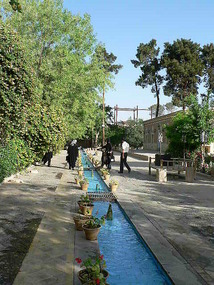
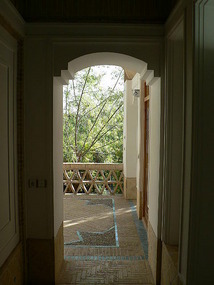
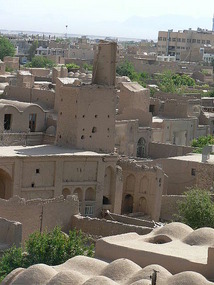

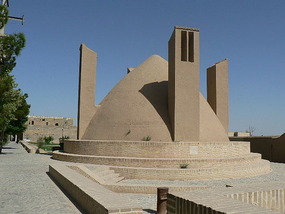
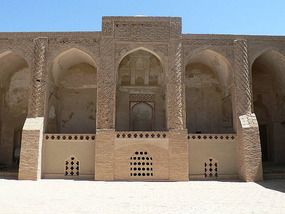
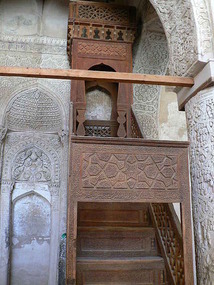
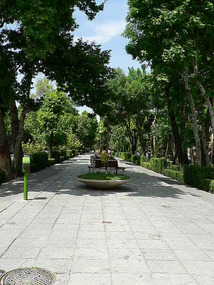
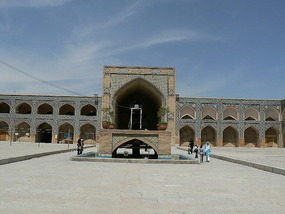
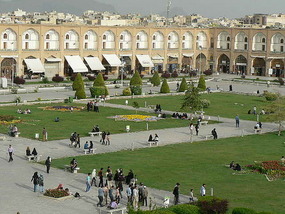
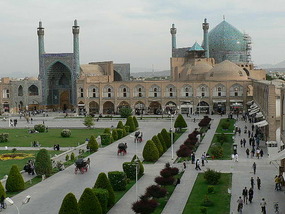
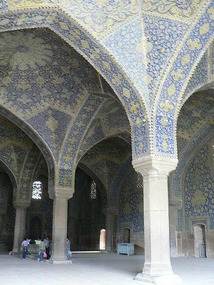
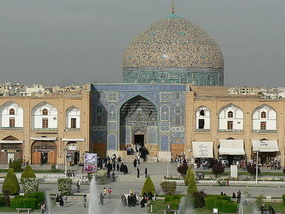
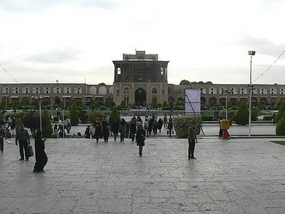
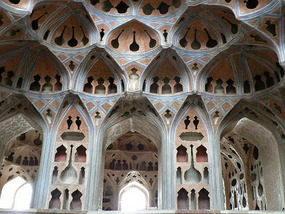
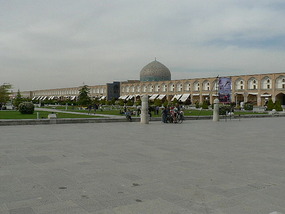
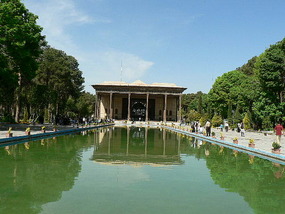
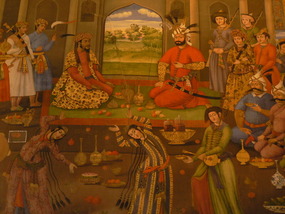
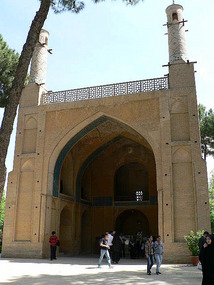
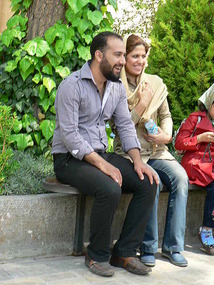
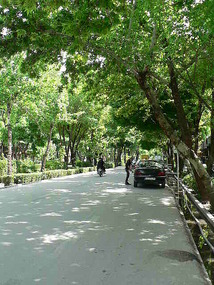
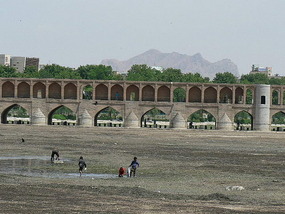
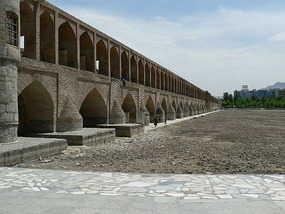
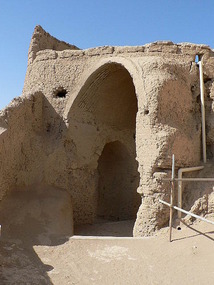
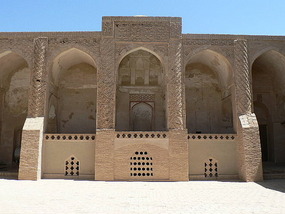
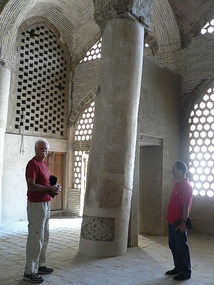
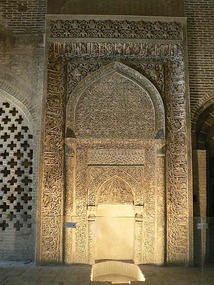
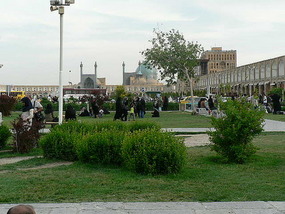
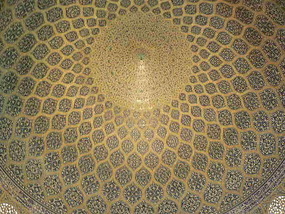
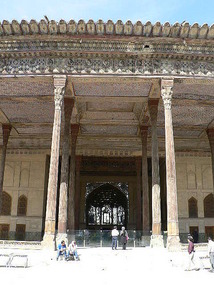

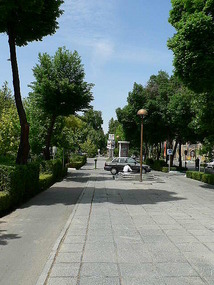
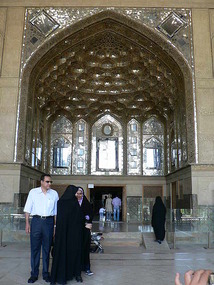
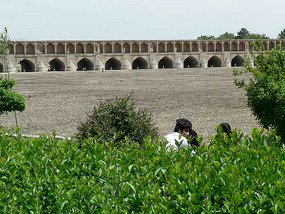






2025-05-22